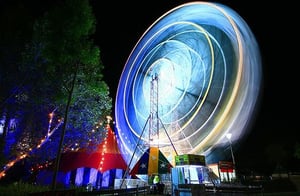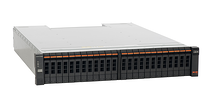 By Todd Cox, Chief Technology Officer
By Todd Cox, Chief Technology Officer
Recently, there has been a lot of buzz around the term “software-defined,” especially software-defined storage (“SDS”). At Able-One Systems, we’ve partnered with Atlantis Computing to deliver SDS solutions for our customers.
The obvious difference is that a true software-defined solution is just that; software only. The solution does not force you to purchase proprietary hardware. You can run a software-defined solution on your own existing hardware, or on hardware from leading manufacturers like IBM, Lenovo and Dell. With Atlantis, you can also pool and abstract existing SAN and NAS based storage, in addition to direct attached.
This leads nicely into the next major difference: cost. Enterprise storage manufacturers spend staggering amounts of money on developing their controllers and operating systems. A software-defined strategy uses commodity hardware, so that all of the R&D effort is focused on the software-defined solution. This drives the cost down considerably over traditional dual-controller solutions.
The real problem with dual-controller traditional storage systems is that there is a finite amount of scalability offered by these devices. Even the very high end controllers can only cluster so far, so there is a very real ceiling on scalability. Since software-defined uses a grid-based approach, the scalability is virtually limitless. When I want to add more capacity or performance, I add more commodity servers and storage.
One might think that using commodity components means that the level of availability and reliability would suffer, but it’s actually the opposite. Atlantis allows data to be striped across multiple drives located in multiple server nodes, for a much higher level of storage availability.
The new buzzword is hyper-converged, which goes hand in hand with software-defined. A hyper-converged architecture uses local SSD drives, commodity servers and combined with software-defined, puts all of your compute, storage and networking into a converged solution. Instead of buying storage and then buying servers to run your VMware environment, your hyper-converged architecture IS your VMware cluster and storage all in one. Imagine the flexibility and the ease of management this brings to the table.
I’m excited to see where this technology is going. Clearly, software-defined storage and hyper-converged are more than just marketing buzz. Companies like Atlantis Computing are certainly leading the way to less reliance on large storage manufacturers.
Navigating software-defined solutions can be complex; if your company needs assistance, contact us today for a free consultation.


